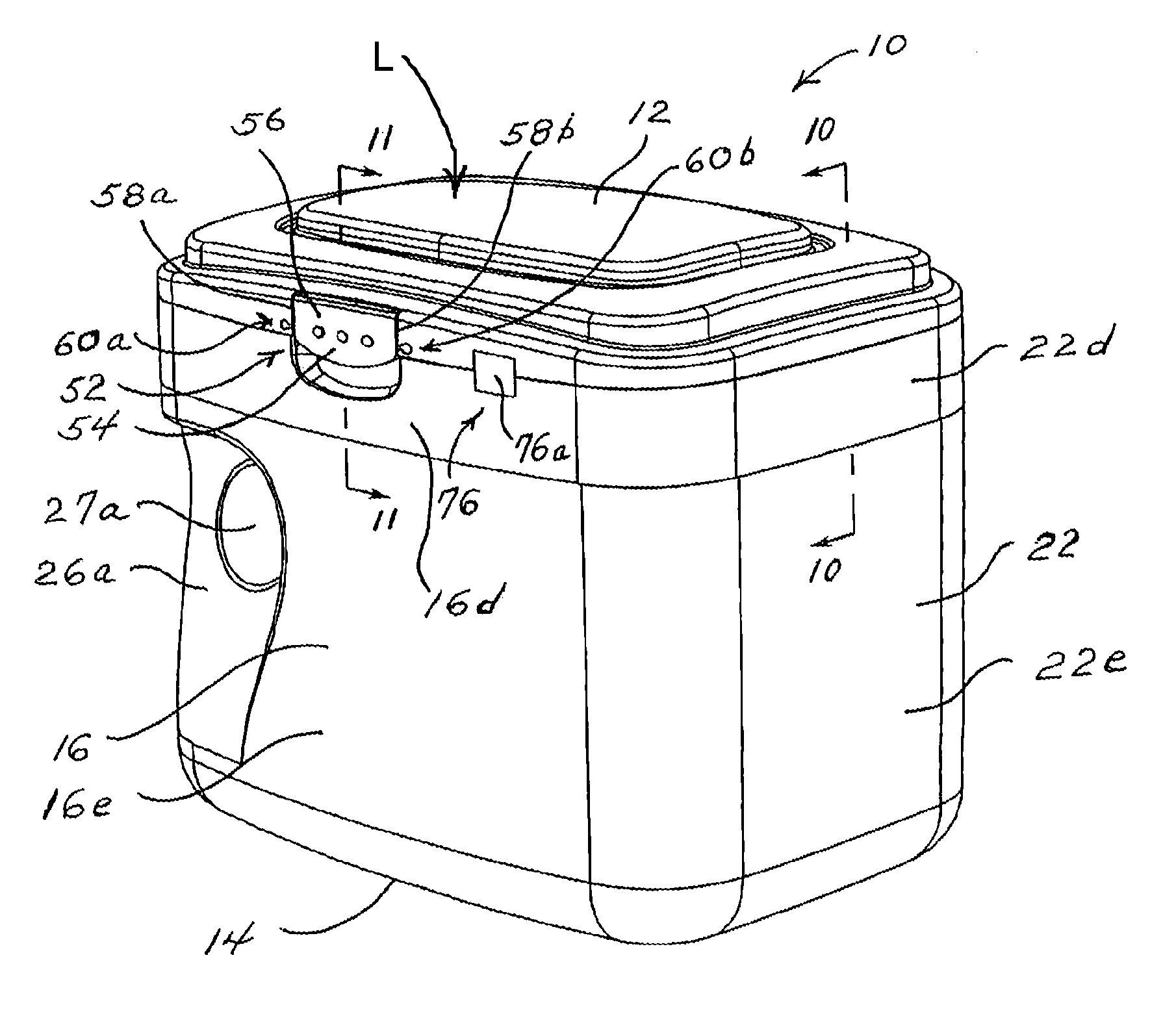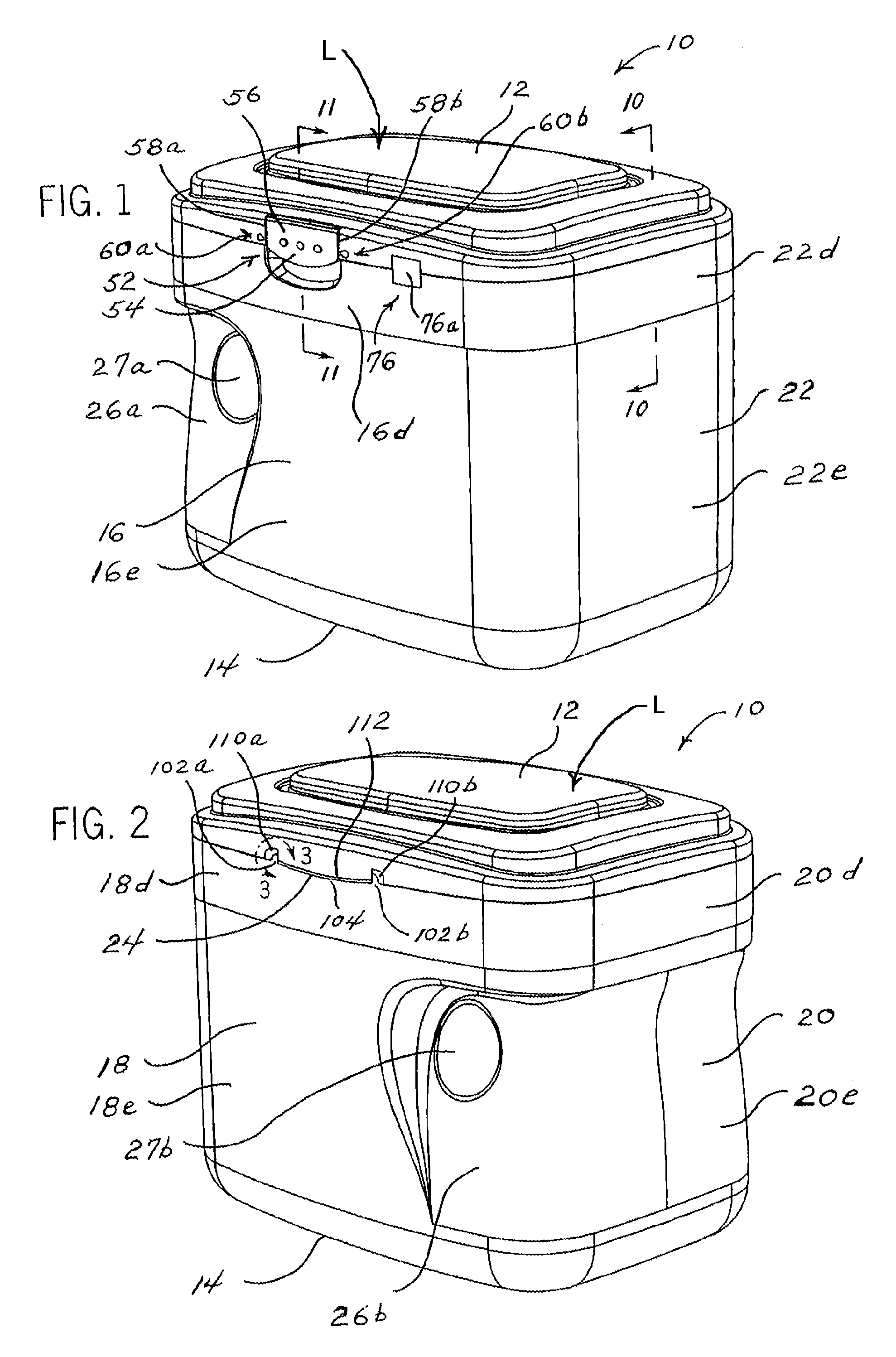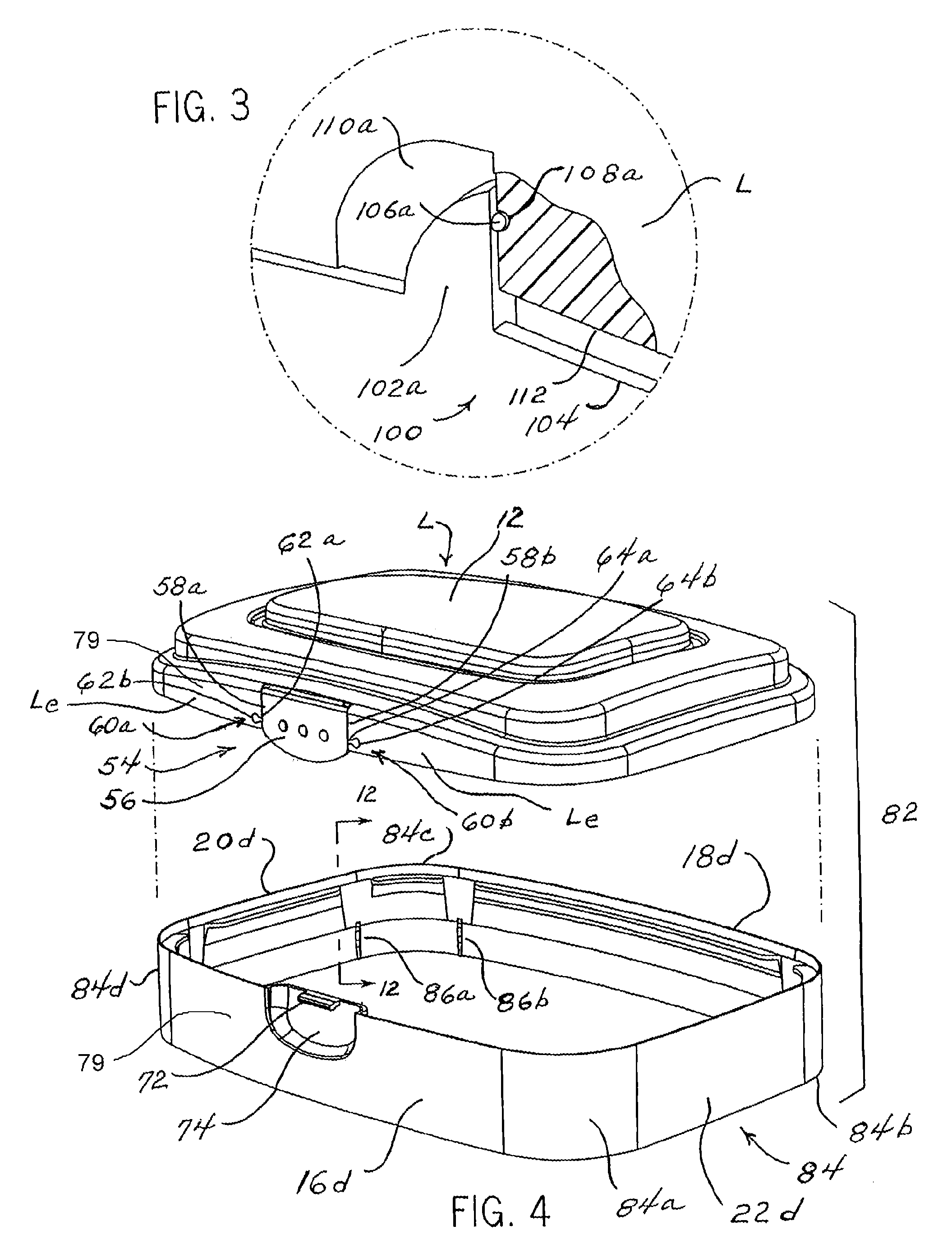Consumers or users of such containers have found that the current packaging is difficult to
handle with a single hand, and have found that it is difficult to open the container and to locate and remove the scoop from the packaging upon the first use without experiencing
spillage.
Once the lid of the container is removed and or opened, the contents are often loosely caked or packed into parts of the interior of the lid or top of the container, which leads to spillage as the contents fall away from the lid or top.
While some of the falling
powder may fall back into the interior of the container, much of it is wasted and contaminated as it spills onto the surrounding
workspace.
Additionally, prior containers do not offer adequate sealing of the contents after the container has been opened for the first time.
This leads to the undesirable and inadvertent leaking or escape of the contents from various poorly sealed areas of the container.
This search and locate process contaminates the contents and soils the hands of the user, which can lead to more unwanted spillage as the powder-coated fingers and hands are removed from the interior of the container.
As the
coating of powder and the packed bowl of powder loosen during the removal process, more contents are contaminated and wasted as the
coating falls away from the hands, fingers, and scoop, and as any powder caked in the bowl loosens and falls.
Additional problems have been experienced with scoops that are positioned in a more convenient location, perhaps against an interior or exterior wall.
These additional problems include difficulty in grasping the scoop, which may be tightly fastened with
adhesive against the wall and or with a mechanical
retainer or
fastener that leaves very little clearance between the scoop and surrounding structure of the container for grasping the scoop.
These undesirable configurations typically will require more than one free hand for removal and grasping of the scoop.
Users have also found that it is difficult to remove the last bit of powder from the nearly
empty container because the shape of the container includes tight and closed spaces that are inaccessible to the scoop, and which has other areas having a shape that is different than the shape of the scoop.
As a result, a user must resort to inverting the container to completely empty the contents, which creates another instance of spillage and wasted contents.
Manufacturers of such containers have also experienced a number of challenges in fabricating the containers when using various types of optional thermo-forming and polymeric manufacturing processes and materials.
Those skilled in the relevant arts have long known about the difficultly in producing various types of packaging containers using thermo-formed polymeric materials.
Such materials are subject to many variables that adversely and unexpectedly result in product components being produced that can vary beyond acceptable dimensional tolerance limits, which results in the need to
scrap defective containers and components of such container, and the need to produce replacements.
Also, polymeric materials can render mis-shaped component profiles due to unexpected shrinkage and warping, and other thermo-forming anomalies that leave entire production runs of containers and components for containers destined for the
scrap heap.
These types of manufacturing problems are especially pronounced in containers formed from assemblies that incorporate more than one component, such as where a top or lid and a collar
assembly are fastened to a bottom part of the container.
Problems in assembling such components can result if one or both of the components are out of tolerance or otherwise mis-shaped.
Still other users experience problems with prior art containers that are inadequate for use in circumstances where the
ambient air pressure external to the container changes drastically so as to create a significant pressure differential between the sealed
interior space of the container and the external, ambient
atmosphere.
When such sea-level pressure containers are shipped to consumers located at higher altitudes or elevations, the container packaging will have a higher
internal pressure, which creates a pressure differential that can be significant.
If the pressure differential is large enough, the container may become distended making it difficult to stack and store, and may even experience a breach, leading to contaminated and wasted product.
Upon opening,
ambient air can rush into the interior space of the container and contaminate the contents.
When a container having a pressure differential is opened, the contents may again spill due to the very rapid pressure
equalization ejecting a cloud of powdered or other type of product contents.
Attempts to overcome these disadvantages have included thicker walled containers, which increases weight and material costs, as well as round and cylindrical containers that may have higher hoop
stress strength, but which are less efficient and convenient to stack and store on a shelf.
 Login to View More
Login to View More  Login to View More
Login to View More 


